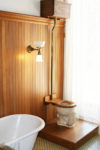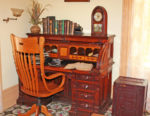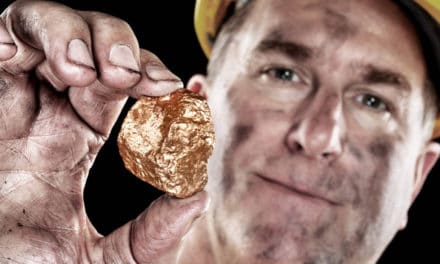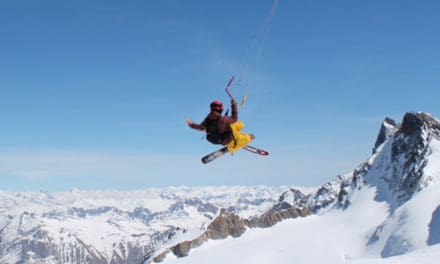Story and photos by Stacy Fisher
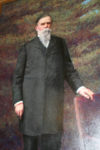
John Bidwell was born in Chautaqua County, New York in 1819 to a poor farming family. In spite of his modest roots, he would eventually become a key figure in California history; a true innovator in achieving valuable advances in agricultural science, as well as a noted politician, prohibitionist, and philanthropist.
His father taught him agriculture, and his mother imparted to him a life-long interest in education and reading. As a young man, Bidwell was quoted as saying, “I was seized with the desire to see the great west. I could not bear the idea of entering school again till I had seen the boundless prairies of which I had read.”
In 1841, 22-year-old Bidwell was one of the first to cross the Sierra Nevada, and arrived in Northern California with a dream of starting his own farmstead. A few years later in 1848 he went to work with John Sutter and struck gold on the Feather River, which he used to finance his agricultural empire. With his new fortune, he purchased nearly 30,000 acres of fertile ground including “Rancho del Arroyo Chico.” Bidwell was a pioneer in agrarian research and ranching methods, and paved the way for progress by adding more varieties of fruits, vegetables, and livestock that he knew would extend the life of the land. He taught local farmers to diversify their crops in order to adapt to the state’s climate and soil conditions, and prevent exhausting the soil.
Bidwell was instrumental in introducing specialty crops like Mammoth Bidwell almonds, olives, and casaba melons, and the first to harvest California’s first commercial raisin crop.
At the height of his operation, Bidwell employed 150 people to work his ranch and farmland, including providing work for Native Americans like the Mechoopda, who had been displaced during the Gold Rush. During harvest season the number swelled to nearly 800 workers.
He sought to unite farmers to increase their borrowing power and deal successfully with foreign competition through expanded markets, and made progress in irrigation techniques while adopting improvements in labor-saving farm equipment.
Bidwell delineated the borders of the town of Chico in 1860, while working on plans for his 26-room mansion, which he finished in 1868 and included such modern amenities as flush toilets and an air-cooling system. It was “the first house north of Sacramento that had indoor plumbing,” Park Interpreter Specialist Michael Rosen-Molina notes.
As a proponent of higher education, he also donated a track of land in 1887 that is now the location of California State University, Chico.
Bidwell served his guests from his own orchards that included apples, apricots, pistachios, peaches, and pears to name a few. He also raised chickens and turkeys, cows, pigs, and beehives for honey. He was the first to grow grapes and make olive oil.
As a statesman, Bidwell won a seat as a member of California’s first State Senate in 1850. He became vice president of the California Democratic Party in 1859, where he spoke out against monopolies, supported women’s issues like the right to vote, and regulation of public utilities. He also ran unsuccessfully for governor twice.
In 1865, 46-year-old Bidwell traveled to Washington D.C. to serve a term in the House of Representatives as a member of the House Agricultural Committee and introduced legislation that led to the California and Oregon Railroad.
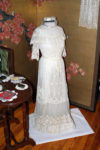
He met his future wife, cheerful and unpretentious Annie Ellicott Kennedy, age 26, and a member of the Presbyterian Church, “just around the time he went to Washington D.C. representing California,” Rosen-Molina states. She was deeply religious and committed to helping those less fortunate than herself, and was a staunch Prohibitionist and feminist. They married in 1868 and lived in the three-story mansion that also featured a watchtower, eight fireplaces, one kitchen, 14 bedrooms, but only three bathrooms; one serving the Bidwells’ master bedroom, one for guests, and another for the staff. Each of the bedrooms conveniently features a sink with running water.
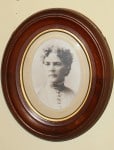
“A library still holds many of Bidwell’s original books, most on agriculture and politics,” and includes a four-volume set titled; The History of Women Suffrage, signed by Susan B. Anthony, who “was also a guest at the mansion along with other dignitaries such as naturalist John Muir, and nineteenth president of the United States Rutherford B. Hayes.”
In 1892 at the ripe age of 72, Bidwell ran for US President but lost over his support of women’s rights. His platform was: ‘No Alcohol—Votes For Women,’ both controversial issues at the time.
In 1900, Bidwell experienced intense chest pains while working at his estate and dies with Annie by his side. She donated 2,400 acres of creek-side property to the city, later named Bidwell Park. She dies in 1918, leaving the mansion to the Presbyterian Church. The mansion becomes a state historic park in 1964.
Bidwell Mansion State Historic Park is located at 525 Esplanade, Chico, CA 95926. A fee is charged for tours. For tour information, phone: (530) 895-6144.


